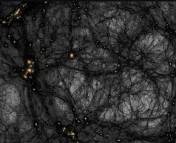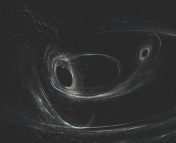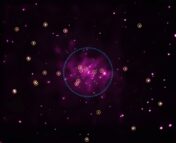Title: Constraints on Compact Dark Matter from Gravitational Wave Microlensing
Authors: S. Basak, A. Ganguly, K. Haris, S. Kapadia, A. K. Mehta, and P. Ajith
First Author’s Institution: Tata Institute of Fundamental Research, Bangalore, India
Status: Published in The Astrophysical Journal Letters [Open Access]
Dark matter is, well, just that: dark. It emits no light, but that does not mean it is not measurable to astrophysicists! We just need to be creative about observing its effects on the surrounding universe. Careful observations of the Bullet Cluster revealed dark matter’s fingerprint, and analyses of galaxy rotation curves reveal that dark matter must play a role in holding light-emitting matter together, both in galaxies and throughout the universe. However, a team of astrophysicists has recently tested a new method of measuring dark matter: a kind of “echolocation” where we “listen” for gravitational waves (GWs) altered by dark matter’s gravitational field.
What are we looking for?
Currently, there are two popular ideas for what dark matter could be, both with incredible names: WIMPs and MACHOs. WIMP stands for Weakly Interacting Massive Particle, suggesting that dark matter is just another type of particle that we have yet to classify in the zoo that is the standard model. In fact, WIMPs are a tantalizing suggestion for the reality of supersymmetry, which really excites particle physicists. However, today’s paper is on MACHOs, MAssive Compact Halo objects. This idea models dark matter as a collection of compact objects, such as primordial black holes (BHs), neutron stars, or brown dwarfs. Conveniently, MACHOs have a very particular signature that we can hunt for: their gravitational microlensing.
Gravitational Microlensing
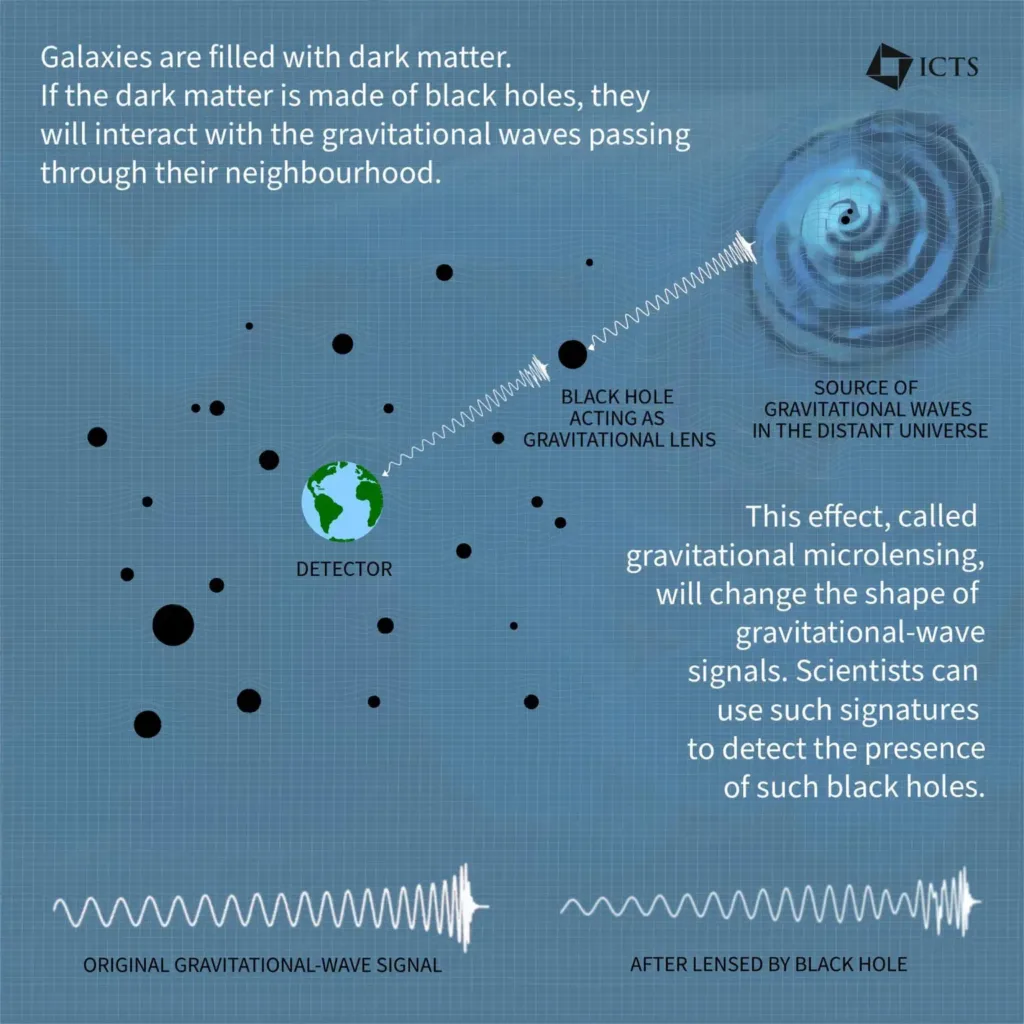
We expect the gravitational fields of massive, compact objects to act as lenses for electromagnetic waves propagating through the universe, affecting our observations on Earth. This will also affect gravitational waves. As an aside, the fact that gravity affects gravity is called gravitational self-interaction, and is part of the reason why the theory of General Relativity can be a massive (pun intended) headache. This effect has been studied and is hence predictable, i.e. we know what a GW signal should appear like both with and without lensing. This knowledge drives today’s paper, searching for the lensing signature of MACHOs. If we see unexpected lensing in GW data, this could be an indication of MACHOs’ presence. This work argues that the observation or non-observation of lensing in GW data could measure the mass of or rule out certain mass ranges of dark matter MACHOs.
This work’s first goal is to seek out evidence of lensing in the Laser Interferometer Gravitational-Wave Observatory (LIGO) data. The authors use computer simulations to build models of unlensed gravitational waveforms generated by BH mergers. The waveforms of lensed mergers can then be calculated from the unlensed models by applying a frequency-dependent magnification that depends on the lens’ mass, redshift, and offset from the path of the GW. These models are sifted through to find the one with the highest Bayesian likelihood, which identifies which model most closely reproduces the waveform data seen from LIGO. You will probably find it unsurprising, since no Nobel Prizes have been handed out for the discovery of the nature of dark matter, that this work does not find evidence of lensing of GWs by MACHOs. However, this non-detection motivates the authors to ask a further question: if we don’t see any GW lensing from MACHOs, what does that say about the abundance of MACHOs?
Where are all the MACHOs?
The work assumes that both GW detections and potential lensing events follow Poisson distributions, which represent the likelihood of measuring a certain number of events in a certain amount of time given the average rate of occurrence. The authors then construct curves that show how likely different values of a parameter are, referred to as a posterior distribution. They intend to use these posteriors to determine potential values for the fraction of dark matter that is in the form of MACHOs, called fDM. For this, they need to know how the number of lensed mergers varies with the number of MACHOs. To calculate this relationship, they use computer simulations filled with binary BHs and MACHOs and count the number of lensed GWs observed by a hypothetical observer. Using this relationship combined with the lensed and unlensed posteriors, the authors calculate that the upper limit on fDM in the mass range they tested (MACHOs between 102 and 105 solar masses) is likely between 50 and 80% (See Figure 2). That is to say, if MACHOs exist, they make up less than 80% of dark matter at most.
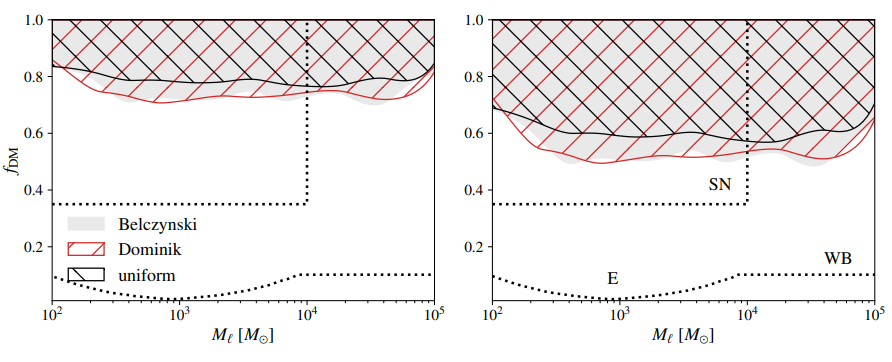
Conclusions and the Future of this Method
The authors admit these constraints are not very strong. However, this method is new and still being tested, and has huge potential. Firstly, it agrees with previous predictions using different methods, meaning this method is likely producing correct constraints on the MACHO mass fraction. Secondly, this method is about to become significantly more powerful; with more data collection (with improved sensitivity) at LIGO in the next few years, we expect to detect thousands more merger events, while this analysis was only done with ~54 data points. The future of GW astronomy will drastically improve this method, and just might help put questions of the nature of dark matter to rest.
Astrobite edited by Keighley Rockcliffe and Lili Alderson
Featured image credit: Katherine Nurminsky

